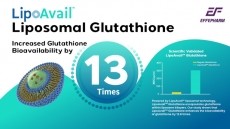Healthy chocolates may need more sugar: Kraft study

Tests with rats published in the Journal of Agricultural and Food Chemistry indicated that metabolites of the beneficial chocolate compounds catechin and epicatechin were affected by the formulation of the product, with high sugar confectionery giving higher blood levels of the metabolites than dark chocolate.
The health benefits of polyphenols from cocoa have been gathering increasing column inches in the national media. To date studies have reported potential benefits for cardiovascular health, skin health, and even brain health.
The benefits of the bean revolve around the flavanols (also known as flavan-3-ols or catechins), and particularly the monomeric flavanol (-)epicatechin.
Good with bad
Regulations in Europe, specifically nutrient profiling for foods that bear nutrition and health claims, could work against chocolate makers, however. The idea behind nutrient profiling is to determine which foods should be barred from bearing claims, because they also contain high fat, sugar and salt levels.
The new findings from researchers from Purdue University and Kraft Foods suggest that more sugar may mean more of the flavanol metabolites in the blood stream, but this could prevent such a formulation being able to make a claim in Europe.
The researchers also report that milk detrimentally affected the metabolism of the compounds.
However, when formulated as beverages, the inhibiting effect of milk was reduced, compared to confections, reported Purdue’s Mario Ferruzzi and his co-workers.
“This may be due to the rapid emptying of beverages from the stomach, which facilitates more rapid appearance in the blood, as well as the relative ease of digestive release and solubilization from beverages as compared to confections,” wrote the researchers. “This process would serve to facilitate subsequent catechin absorption.”
Test details
Ferruzzi and his co-workers expanded on previous studies that investigated the effects of carbohydrates and milk on the bioavailability of cocoa flavanols by assessing the impact of the food matrix on the levels of circulating catechins and their metabolites.
Sprague-Dawley rats were given 1.5 g of “commercially relevant chocolate confections”, including dark chocolate, high sucrose, or milk chocolate and blood levels measured over eight hours. The animals received the confections via a tube straight into their stomach.
Results showed that the predominant metabolites were O-glucuronides and O-Me-O-glucuronides. The highest blood levels of these compounds were observed when the animals were given the high sucrose chocolate, and the lowest levels were observed for the milk chocolate.
“Our data combined with that of previous investigations suggest that chocolate confections containing high levels of sucrose may enhance plasma levels of the predominant catechin and epicatechin metabolites as compared to milk chocolate confections, while confections containing moderate levels of sucrose and no milk deliver intermediate plasma levels of these compounds,” wrote the researchers.
“However, the physical state of the product may significantly modulate this effect, as our prior study comparing confections and beverages demonstrated that milk-containing beverages produced generally higher serum [levels] than confections with or without milk, and numerous studies have shown no difference in the overall bioavailability of EC between cocoa beverages formulated with milk versus water.
“In the future, simultaneous investigation of the distribution of native species and phase II metabolites into both plasma and urine will be required to quantitatively assess the influence of chocolate matrix composition and physical form on the bioavailability, metabolism, and systemic distribution of catechin and epicatechin from chocolate.,” they concluded.
Source: Journal of Agricultural and Food Chemistry
Published online ahead of print, ASAP Article, doi: 10.1021/jf1005353
“Chocolate Matrix Factors Modulate the Pharmacokinetic Behavior of Cocoa Flavan-3-ol Phase II Metabolites Following Oral Consumption by Sprague−Dawley Rats”
Authors: A.P. Neilson, T.N. Sapper, E.M. Janle, R. Rudolph, N.V. Matusheski, M.G. Ferruzzi











